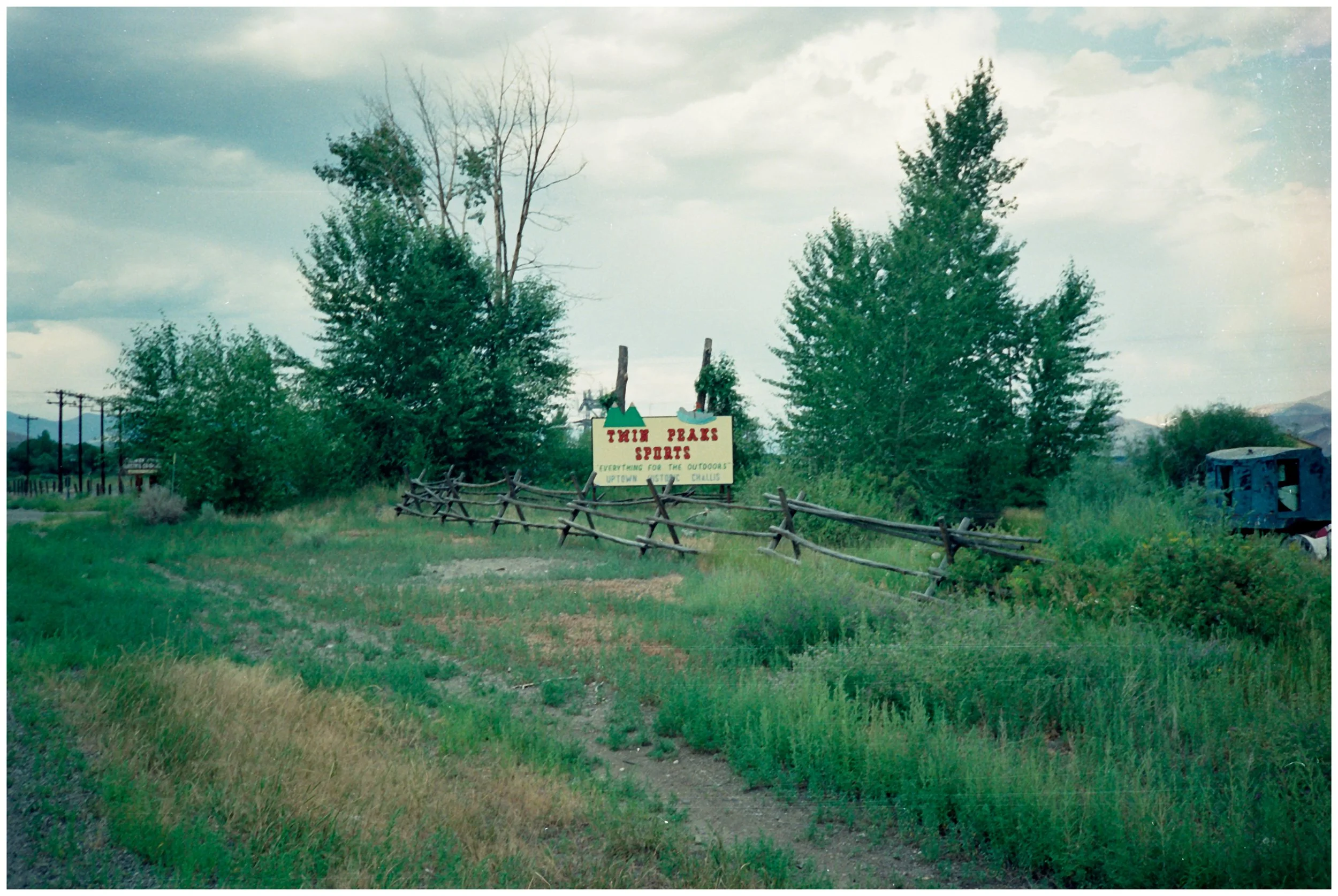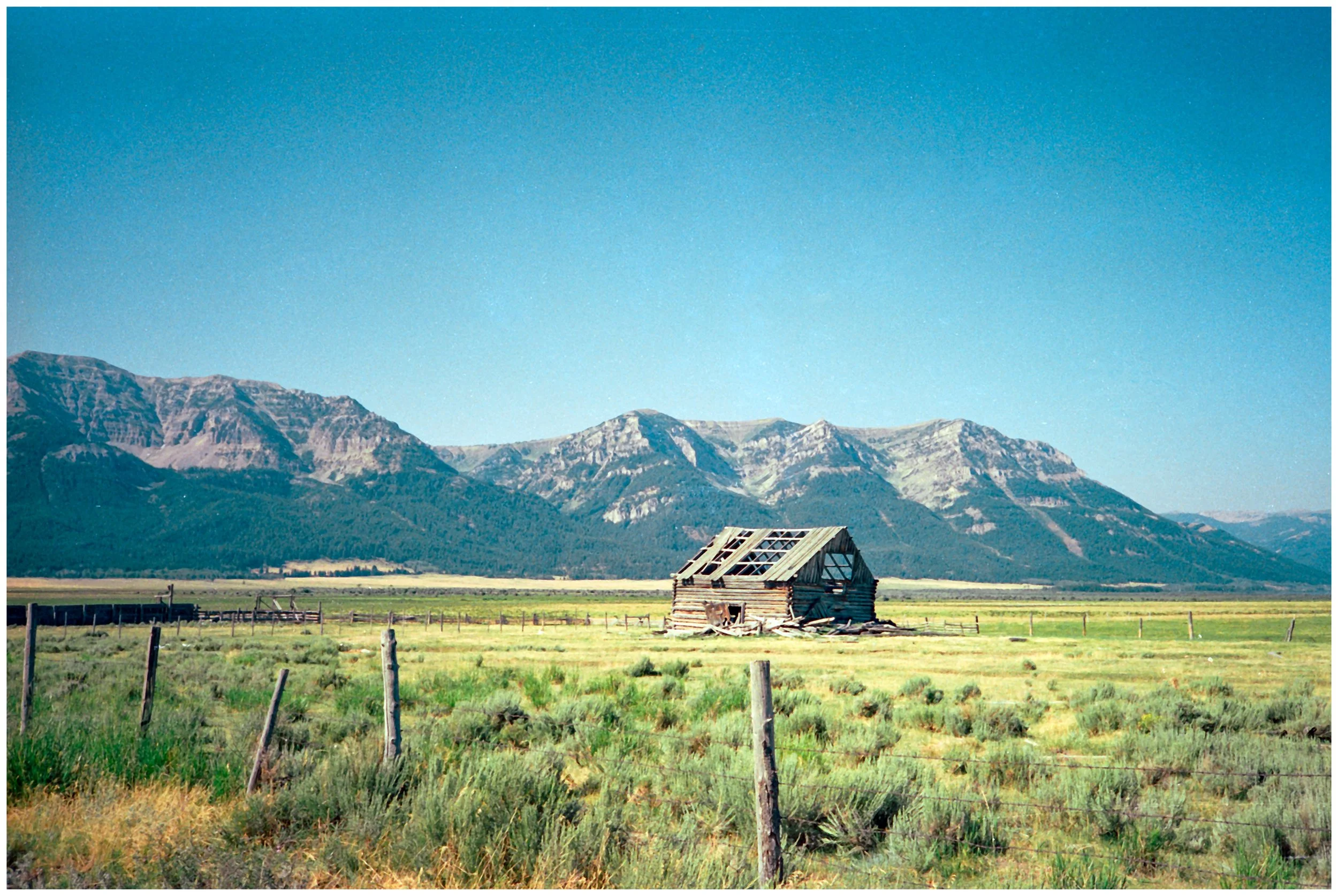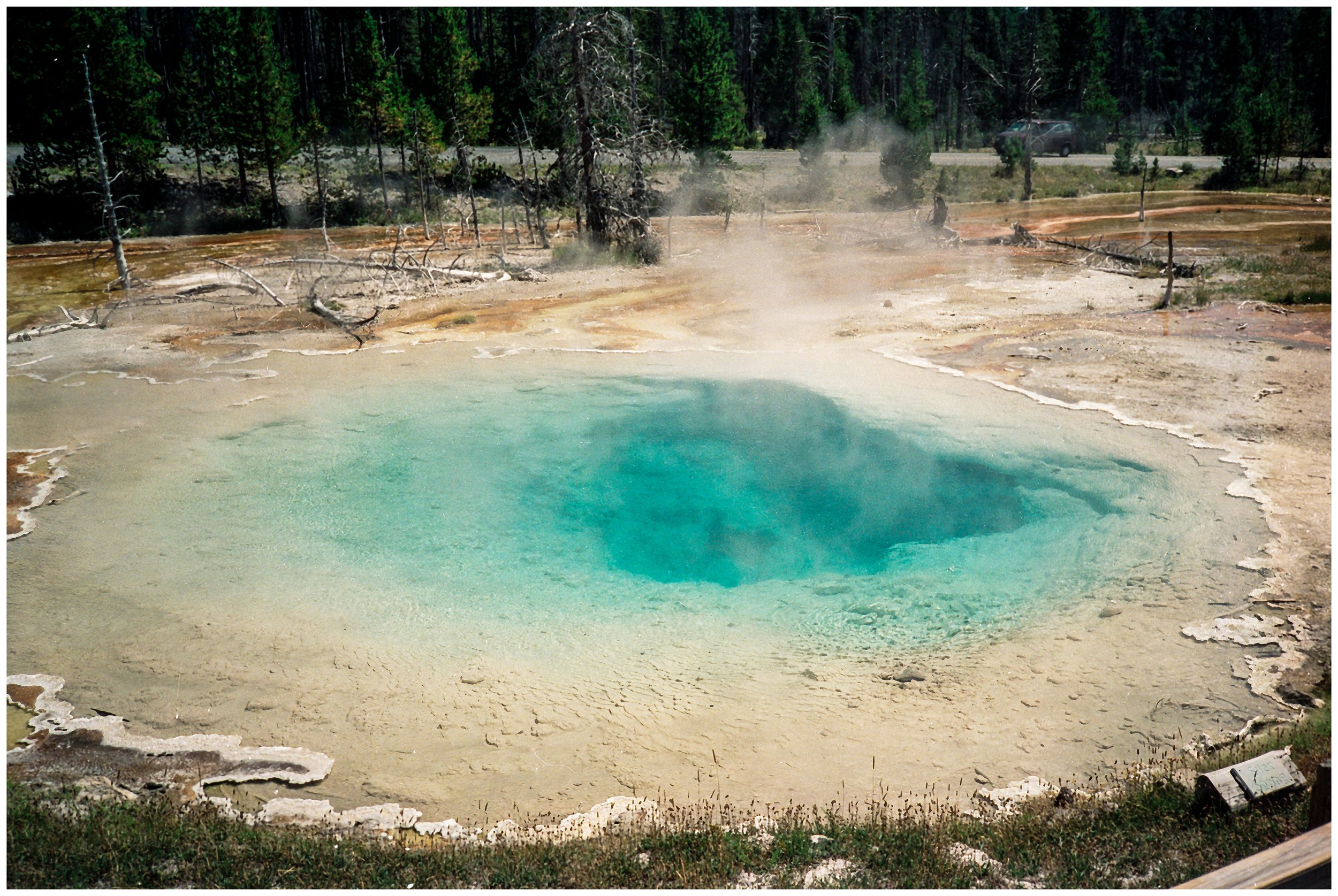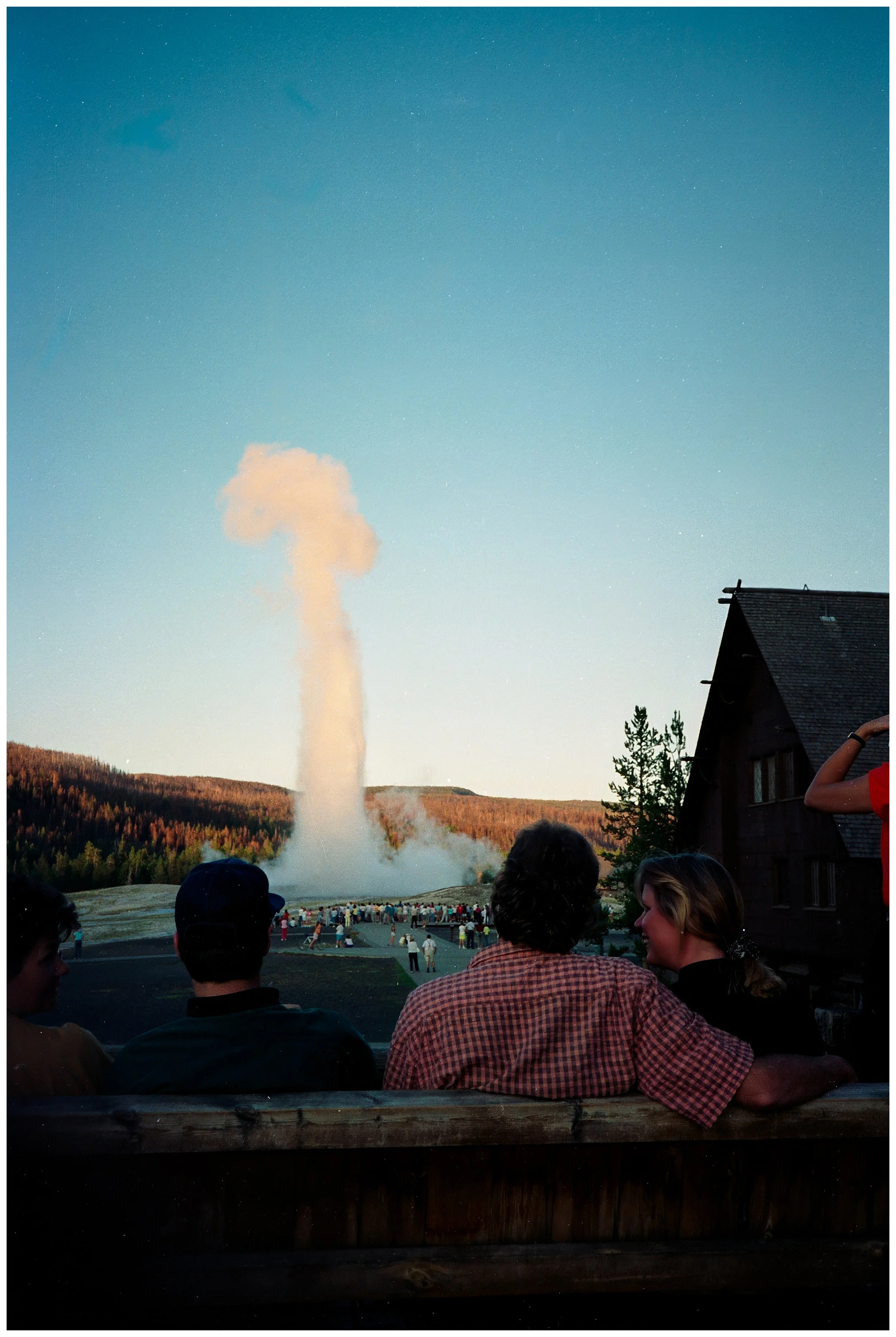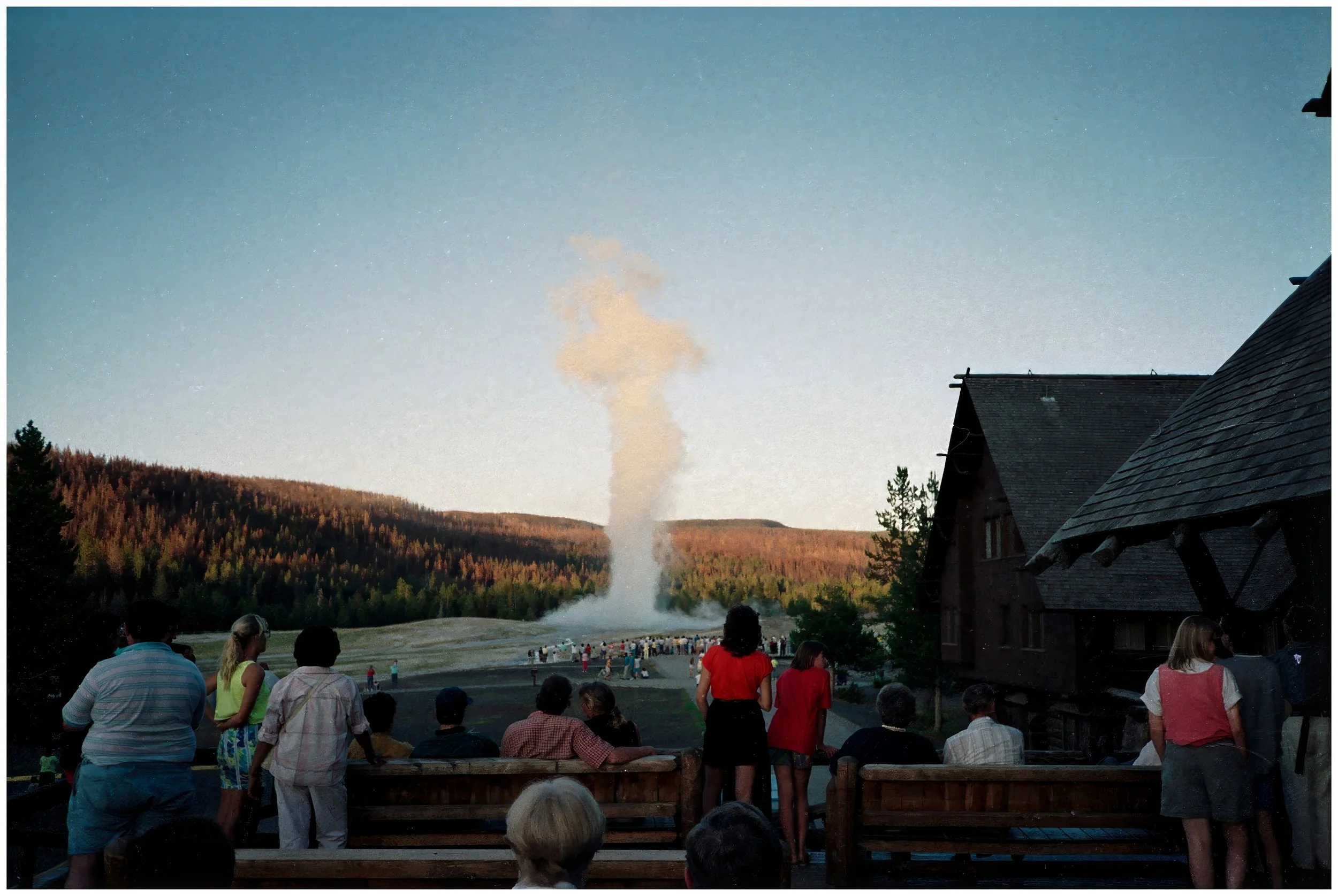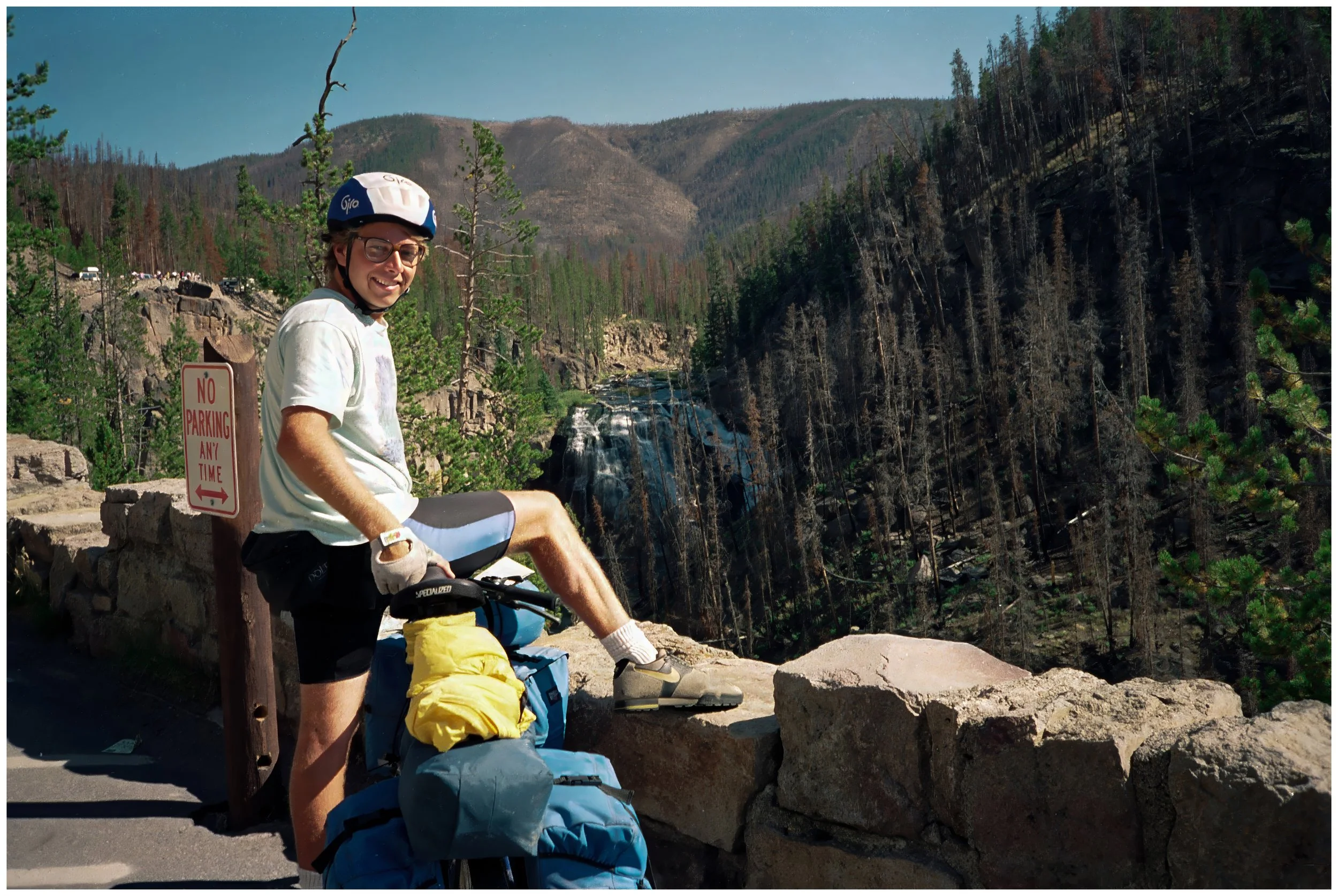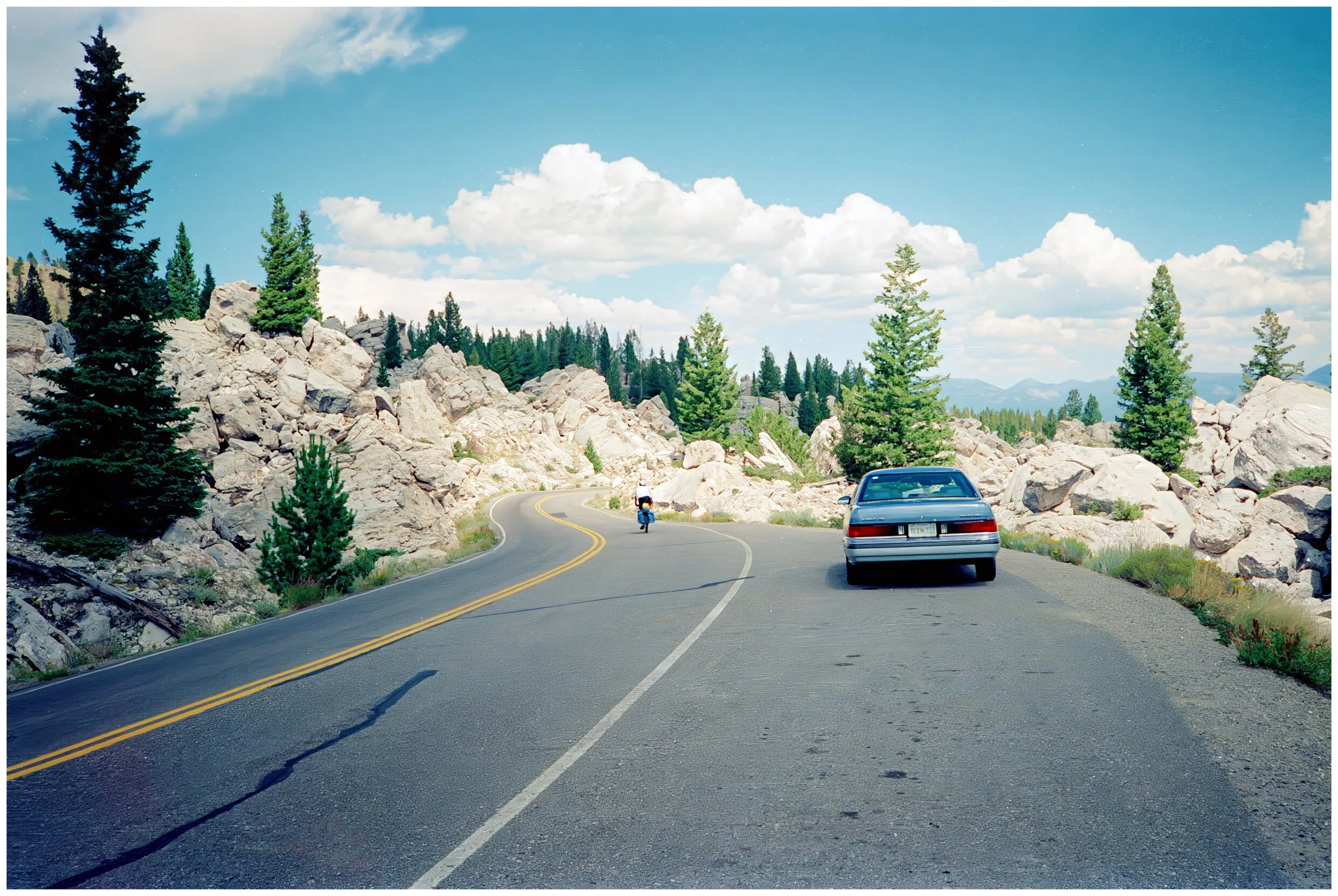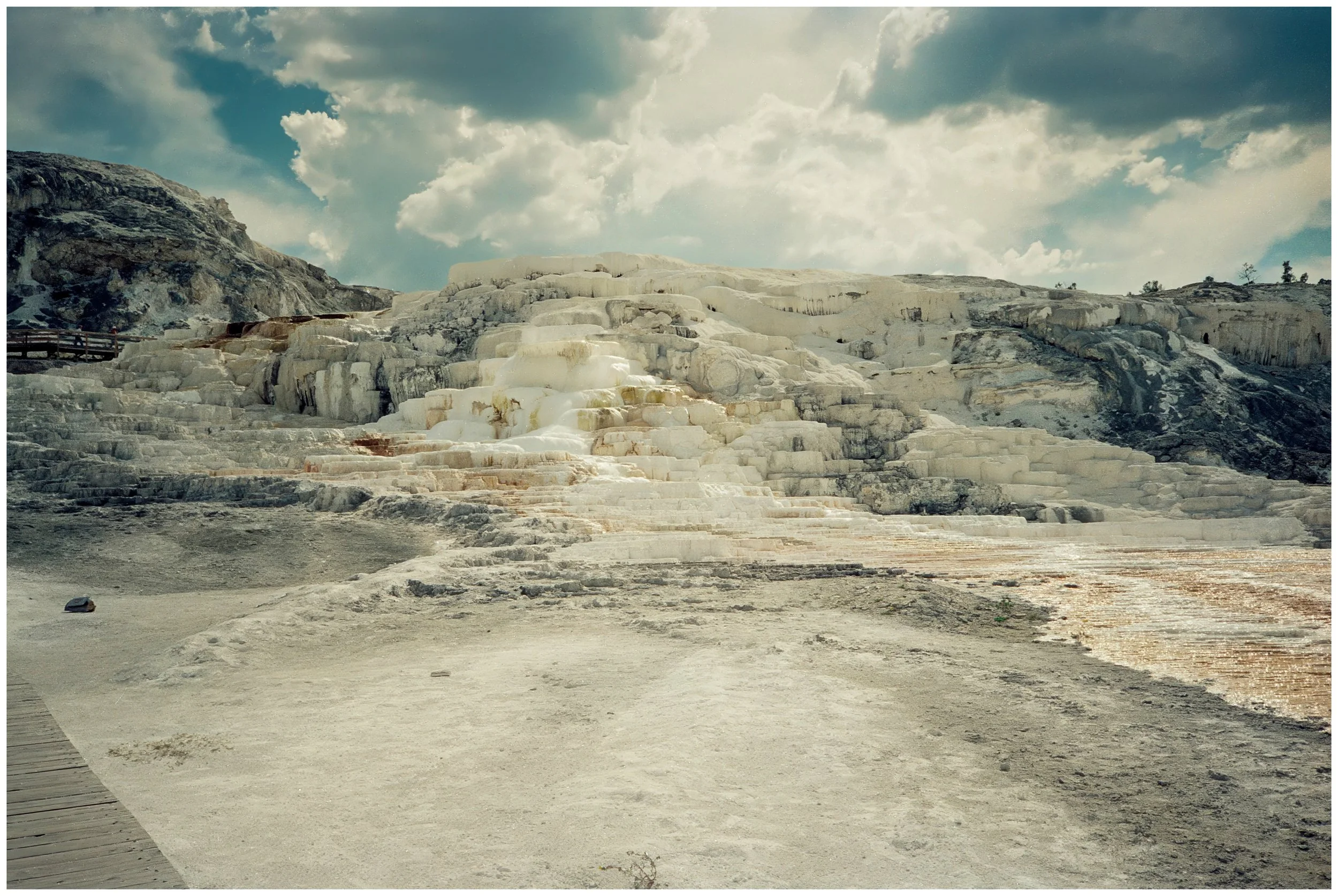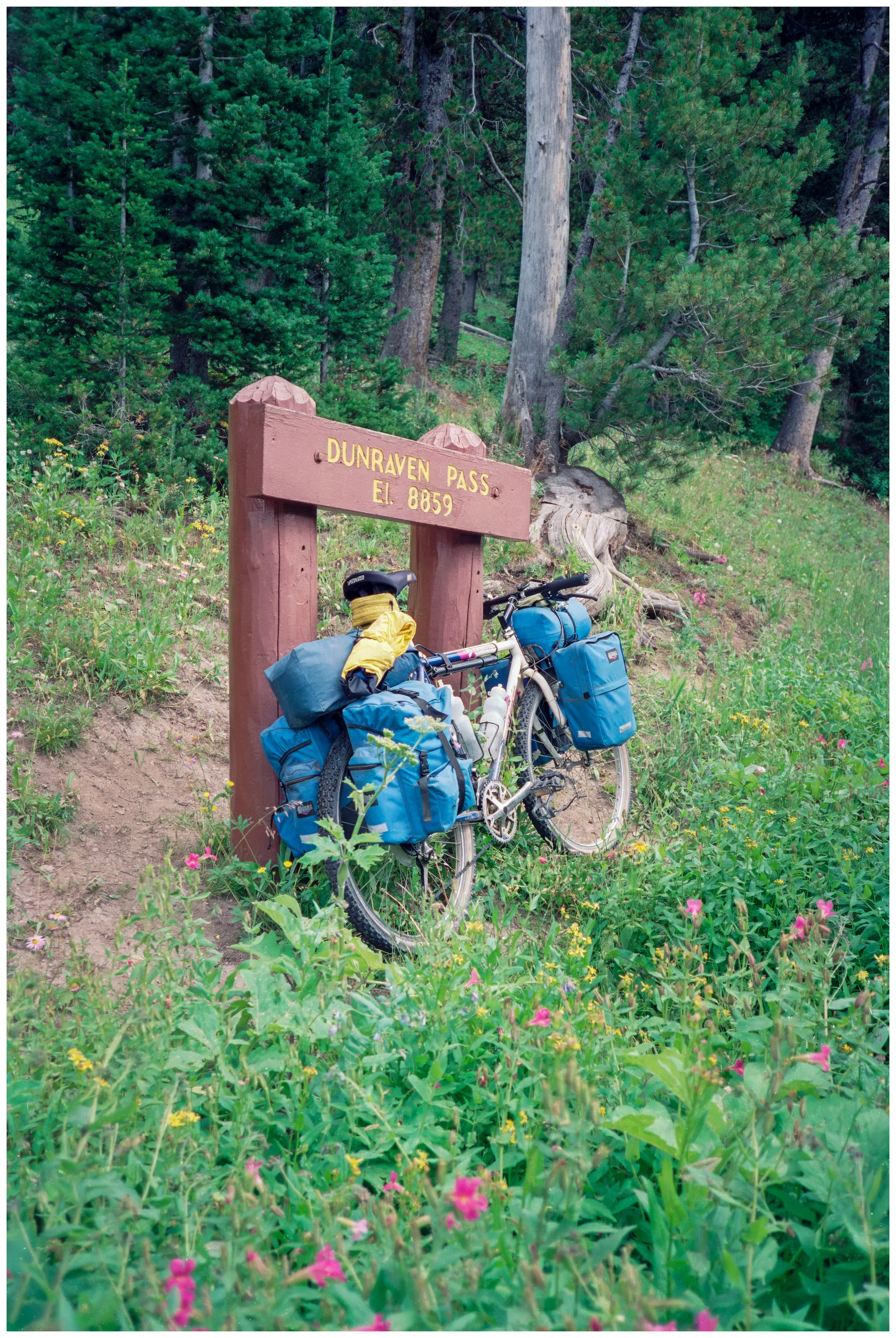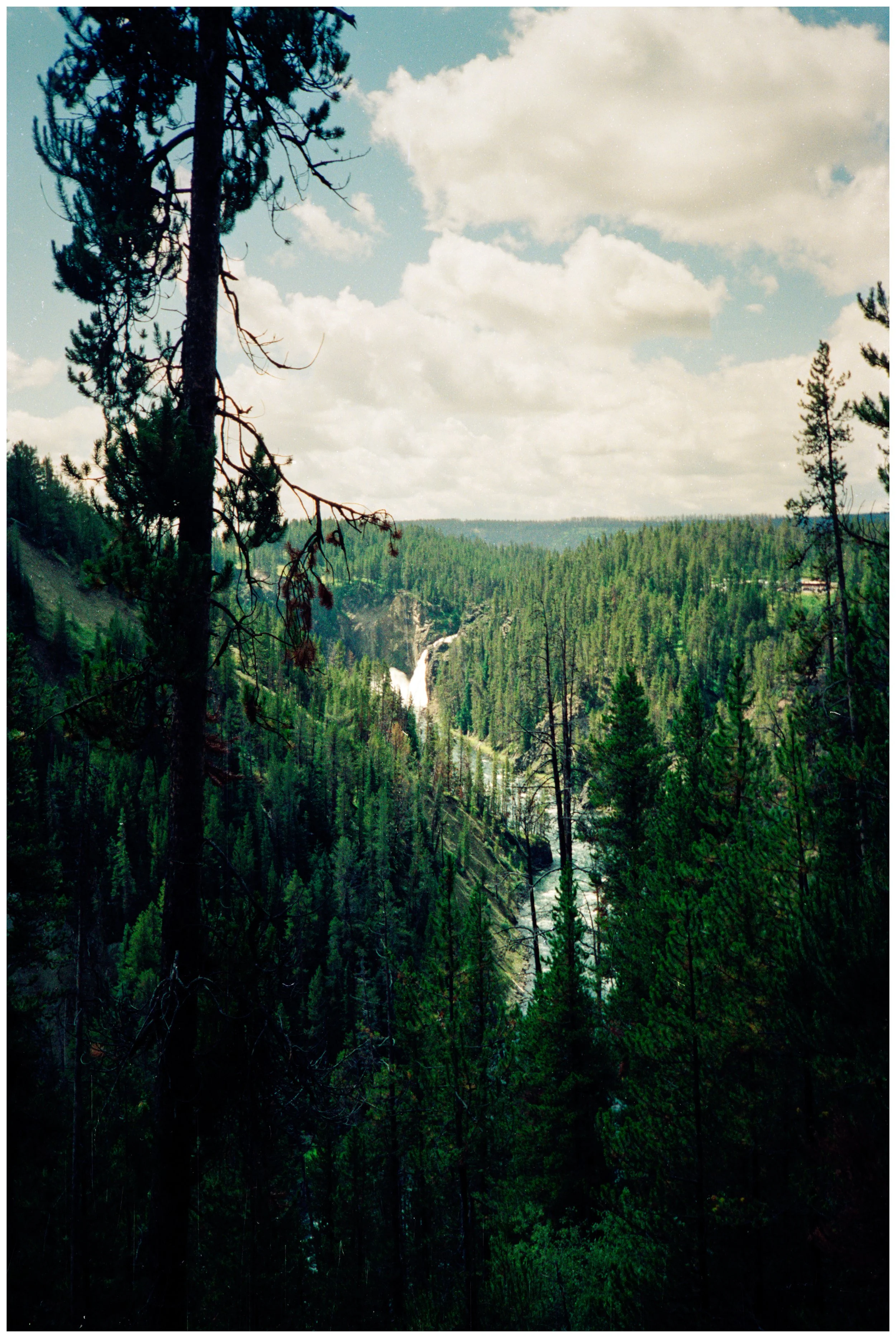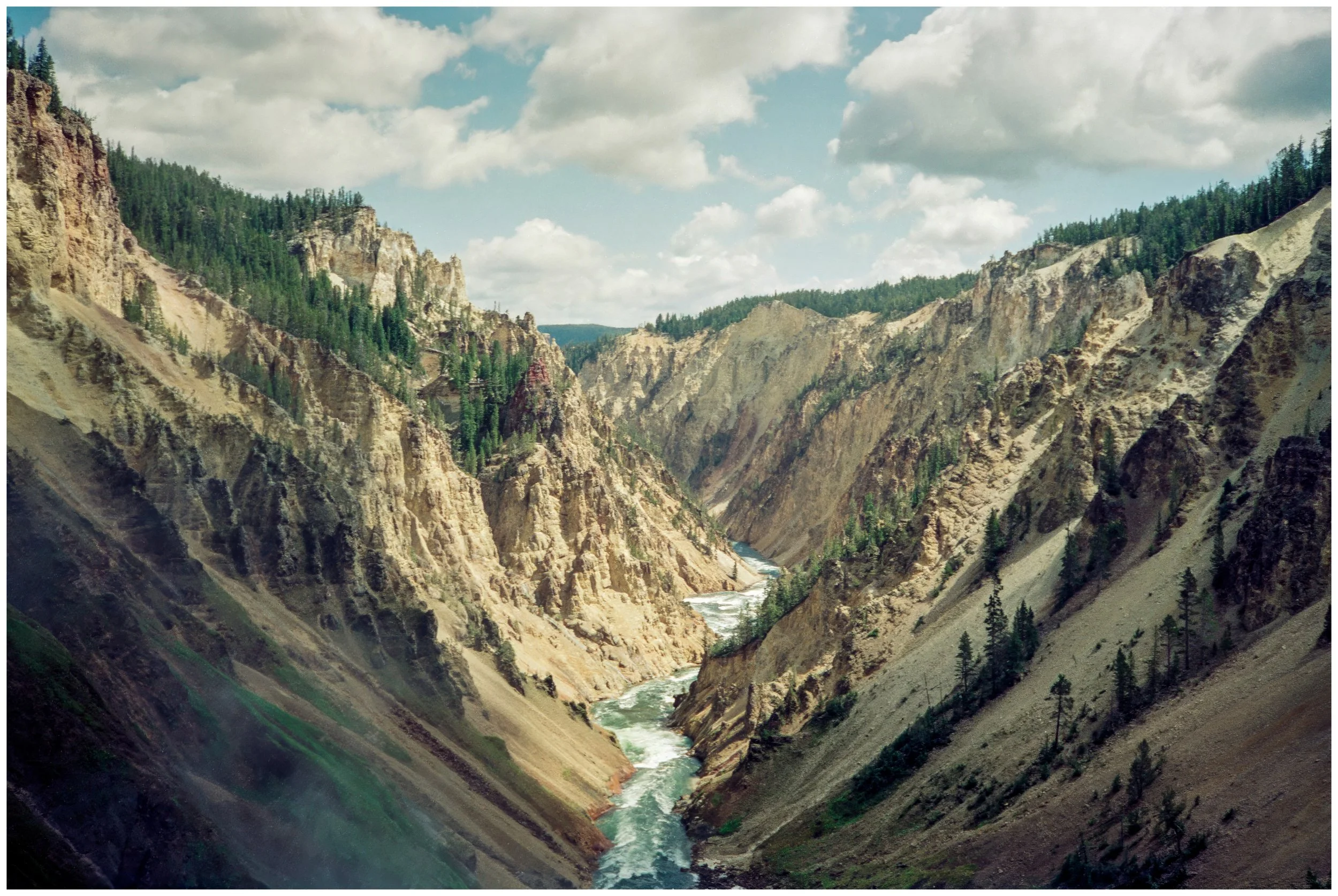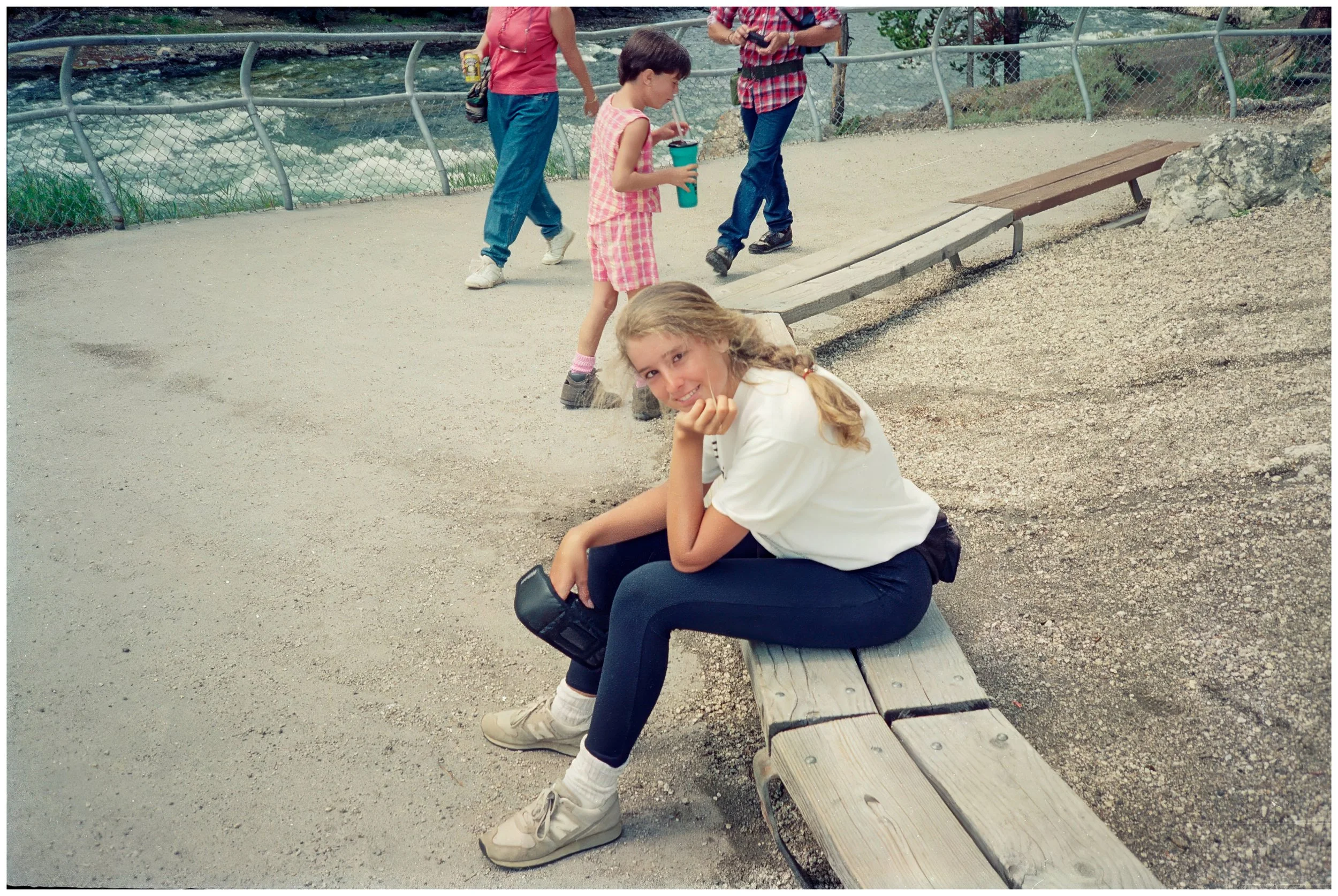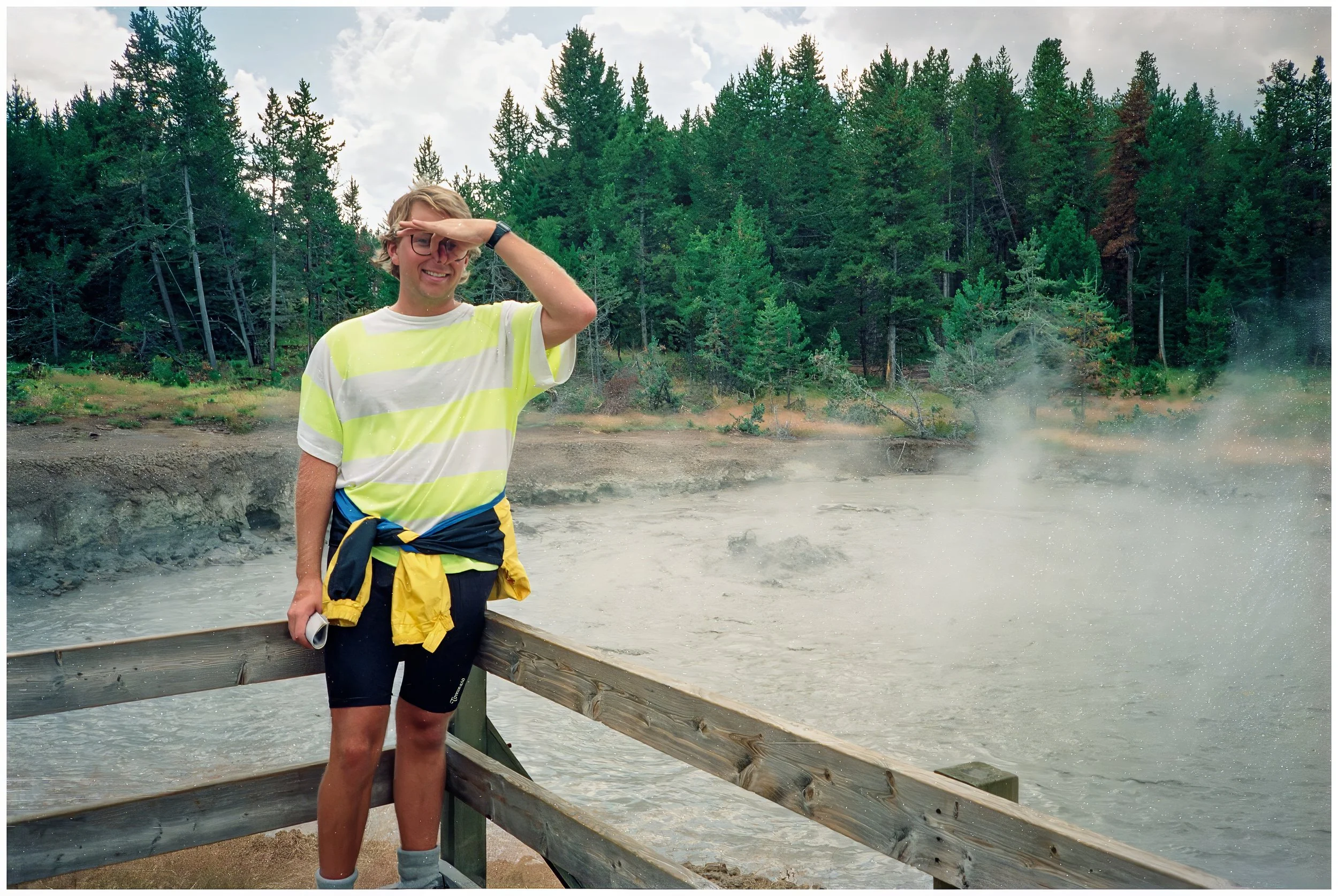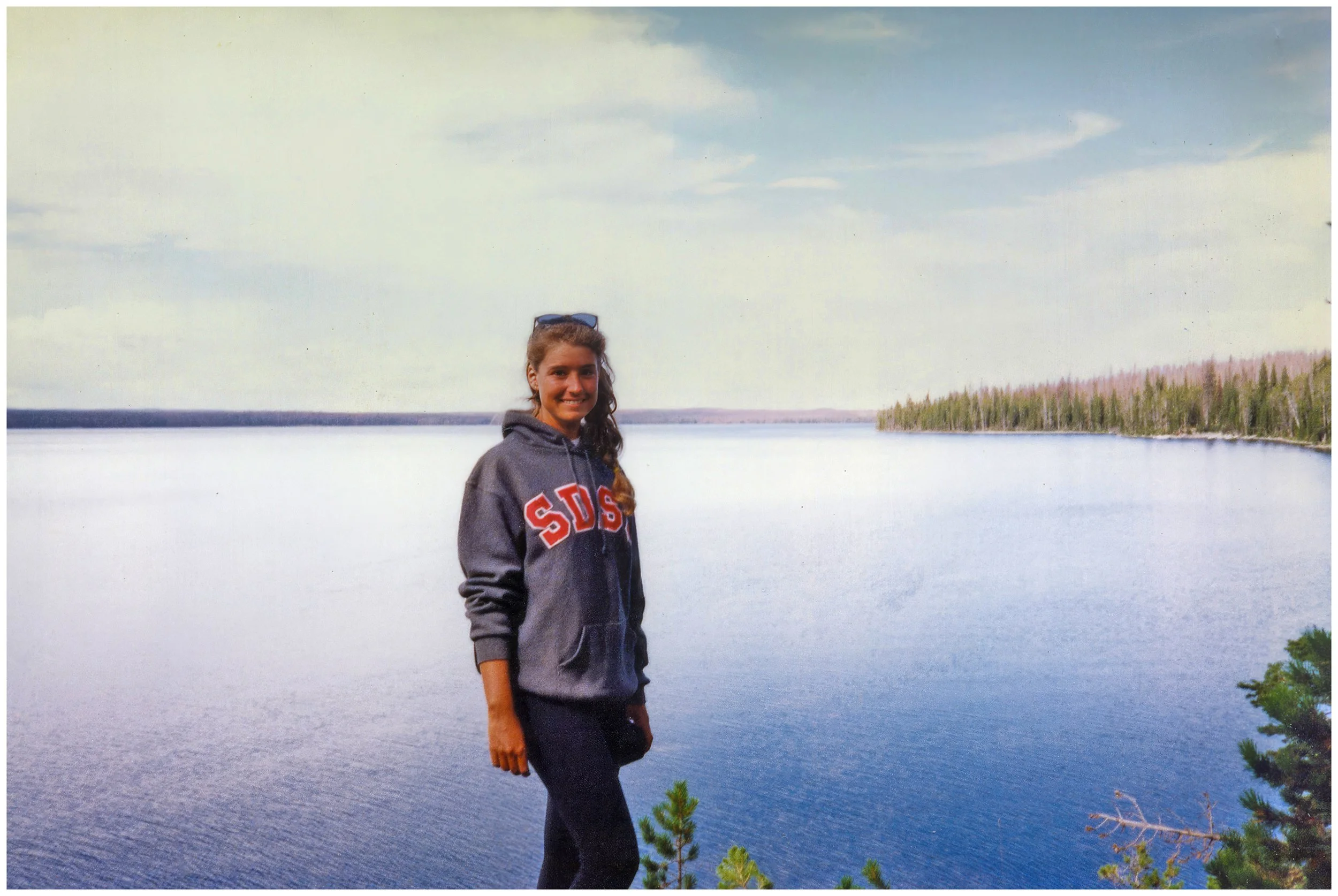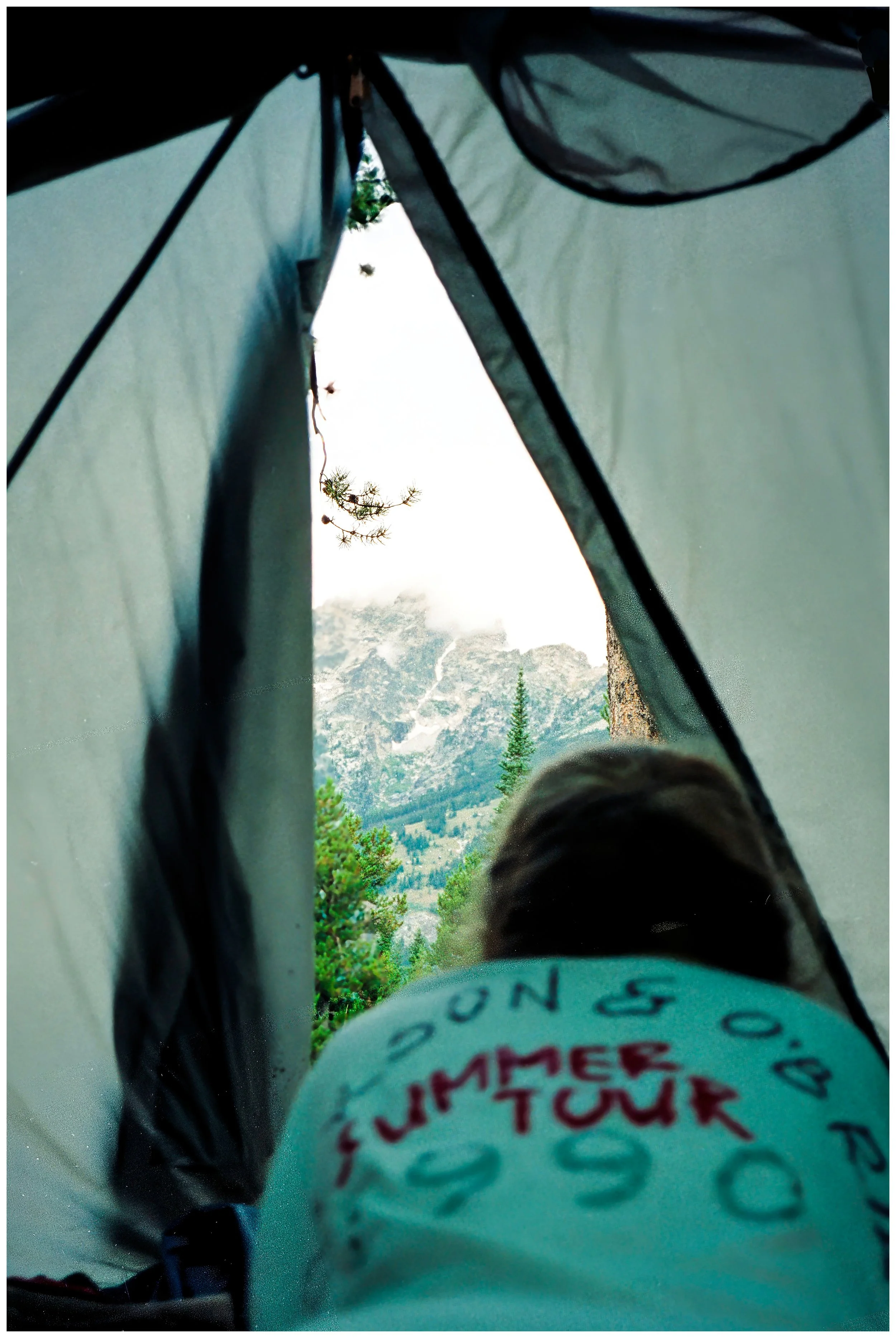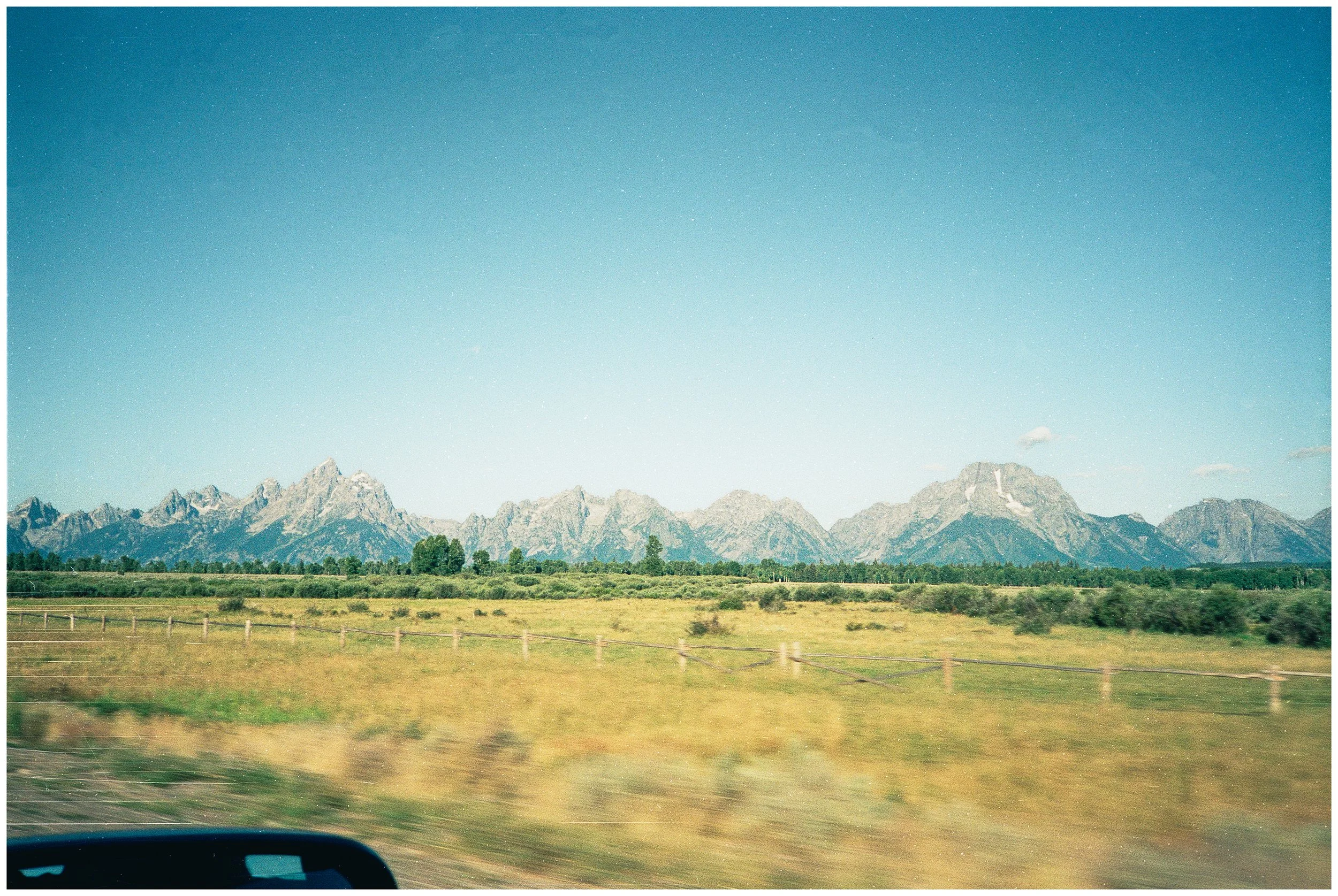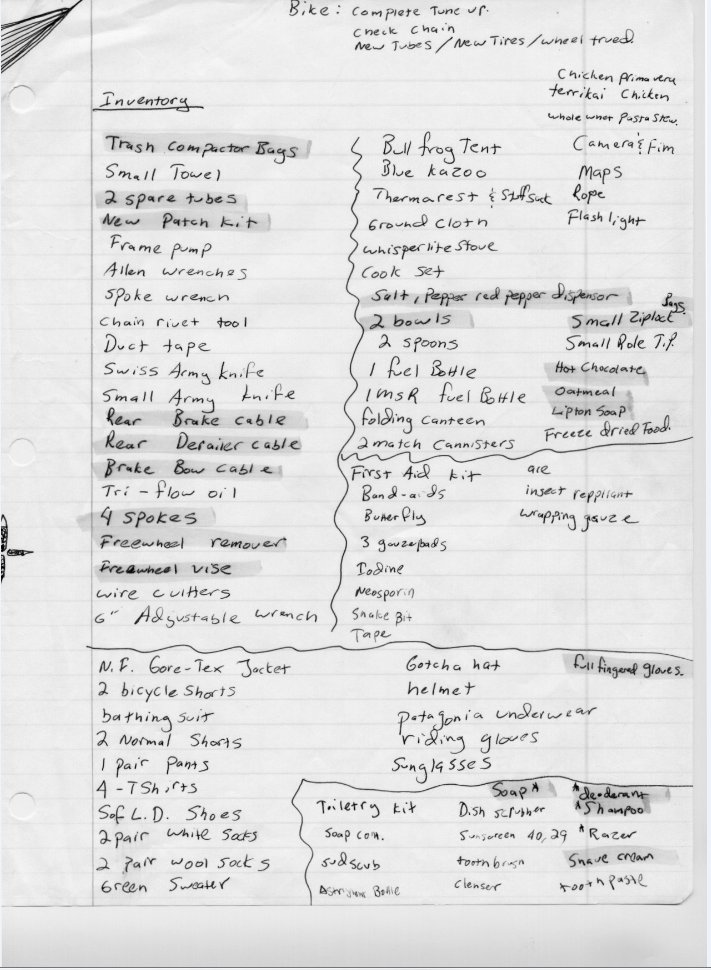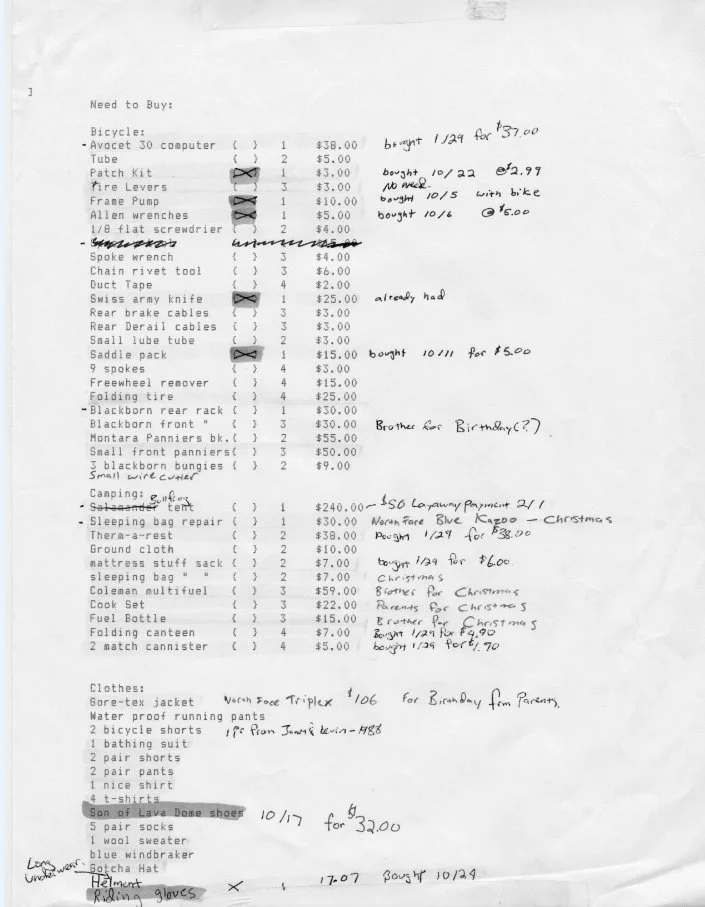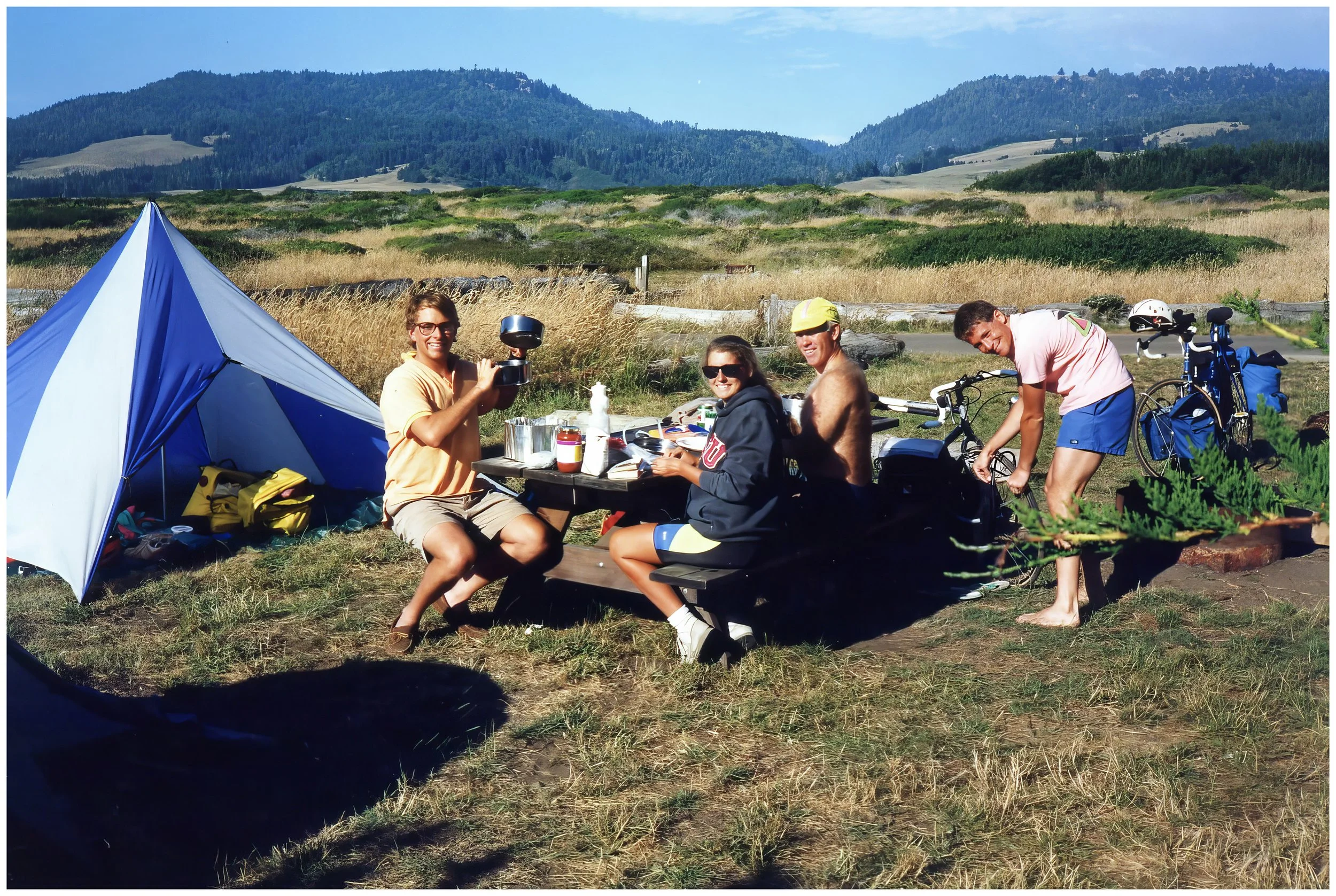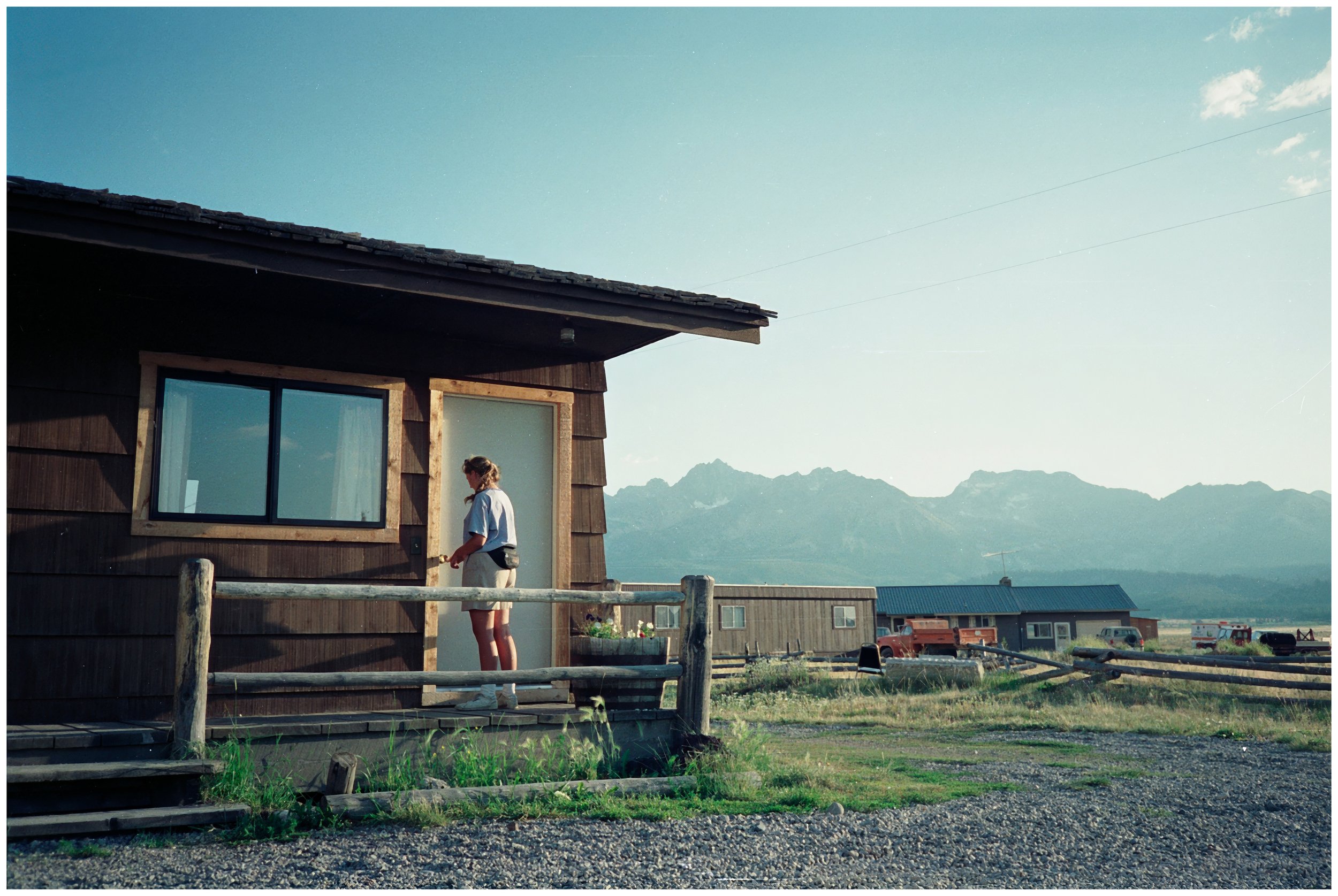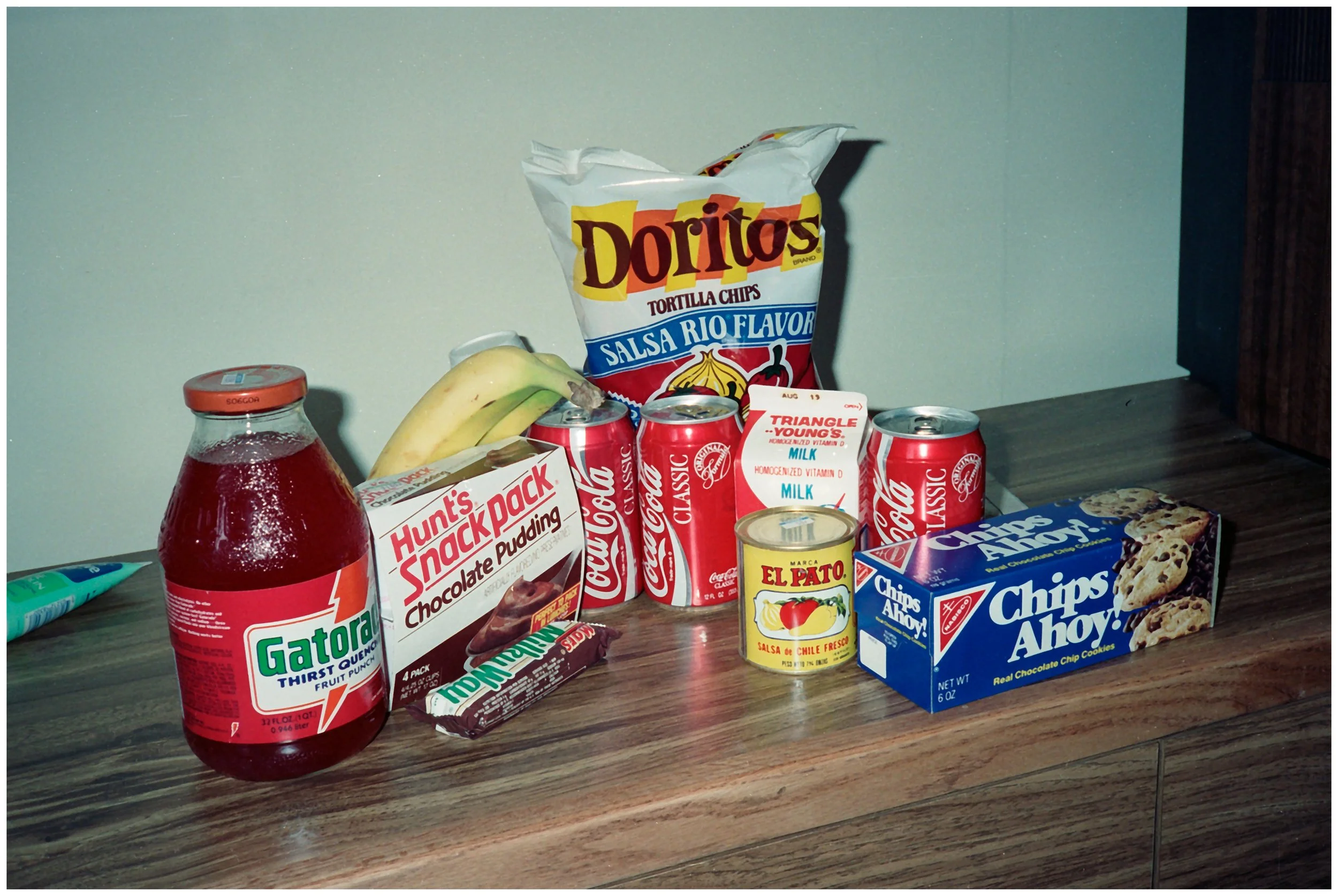
Miles From Nowhere.
First, forget your modern life ….
In 1990, there was no Bluetooth, Wi-Fi, Google Maps, or Ride With GPS. The invention of mobile phones, digital photography, and even the Internet was years away. You had to carry a camera to shoot a photo, and when you were out of film, you were out of luck. Pay phones were still a thing. The concept of instant connection to anyone you knew was science fiction.
Navigation was tricky. When you reached a new town and wanted to know where a particular store or swimming hole was, the easiest course of action was to ask another human, face to face!
People were accustomed to giving directions back then.
State maps were commonplace, but charting a route through an unfamiliar town using back lanes or Forest Service fire roads was byzantine.
We lived in a murky, wonderful analog world.
None of this was on my radar in the fall of 1989. It was just the way it was.
But now it suddenly mattered. A few weeks earlier, in a stroke of ambition/daring/naivety that still leaves me gobsmacked, Chris Hilbert, Christy Peterson, and I decided to ride bicycles from someplace in Southern California to Yellowstone, Wyoming, the following summer.
Now we just had to figure out how to do it. (We also needed to buy bikes and camping gear, but details, schmetails…)
I blame Barbara Savage. Her 1983 book, “Miles from Nowhere: A Round the World Bicycle Adventure,” was a gateway drug that burrowed so deeply into my gulliver that traces are still easy to spot today. Along with her husband, Savage rode 23,000 miles through 25 countries in two years, seemingly making up their daily routes along the way.
That strategy wouldn’t work for us. First, we had a finite amount of time: six weeks, maybe eight at the most. Next, some planning seemed mandatory. I mean, how far was it to Yellowstone? How long would it take? What mountains/deserts/killer highways stood in our way? Where would we stay? Was food and water available?
These weren’t insignificant questions, and finding answers would take weeks.
Fortunately, I found a secret weapon in a small, brightly lit room on the second floor of the SDSU library. The Map Room housed thousands of local, county, and USGS topographical quadrangle maps, state maps, and navigation ephemera in dozens of wide, wooden cases with very shallow drawers. The king of this domain was a kind man with a patient face who smelled faintly of dust. He answered my questions and, day by day, the route slowly took form.
To start the trip, we’d use the best cheat code: Tom Kirkendall and Vicky Spring’s seminal book Bicycling the Pacific Coast. This would get us to Oregon and give me insight into route planning, so each day remained “vacation” and not “death march.” I mostly succeeded.
We’d skip L.A. and its traffic, starting in Lompoc at the home of Christy’s roommate. We’d follow the Kirkendall book for fifteen days as we mostly camped and rode along the California coast.
From the California/Oregon border, we’d head northeast to Christy’s cousin’s house in Grants Pass before climbing to Crater Lake.
From there, we’d ride the Cascade Lakes National Scenic Byway to Bend, cut across the high deserts of Southern Oregon, and climb up and around the Sawtooth Range of Central Idaho.
We’d follow the Salmon River downstream for 120 miles before climbing over the Continental Divide at Lemhi Pass, where Sacagawea led Lewis and Clark into the unexplored west in 1805.
Some remote dirt road riding in SW Montana through the Centennial Valley would drop us off near our primary destination: Yellowstone National Park. We’d spend five days riding around the park before heading south past the Grand Tetons to the finish line in Jackson, Wyoming—44 days and about 2,000 miles from our start in Lompoc.
By Christmas, we were thinking, this just might work.
Countdown to Launch.
We bought our bikes at Adams Avenue Cyclery in Normal Heights on October 5, 1989. Our route included several days on dirt roads, and the stability and ruggedness of mountain bikes seemed appealing. We chose Specialized Rockhoppers, the pared-back, less expensive version of the famous Stumpjumper, one of the first widely produced mountain bikes.
Chris and I lived in Tierrasanta then, close to Mission Trails, where we rode in the afternoon. Weekends were for longer rides, braving the busy roads of Mission Valley on rides to the beach. Arriving back sweaty and exhausted Saturday evening in time to watch Star Trek: The Next Generation is a clear memory. Yeah … nerds. Sue me.
We slowly worked our way through our gear shopping list, relying heavily on Christmas and birthdays for the larger items. Each addition was a triumph, a totemic representation of our coming adventure. The purchase of our North Face Bullfrog tent and Blue Kazoo sleeping bags were reasons for celebration.
Then, a setback: Chris backed out of the trip. Christy and I faced a brief crossroads when the trip hung in the balance, but it didn’t last long. Soon, it was once again all systems go.
Of course, it wasn’t without a few bits of turbulence. Telling Christy’s folks about our plans the previous fall was nerve-racking, even if one of their questions (“What if you get a blister?”) later became a humorous rallying cry when things got tough. When I told my brother, he just shook his head and said, “What a dumbshit.”
Spring 1990 arrived, and the route continued to firm up. The paycheck from my North Shore article was perfectly timed and sorely needed. Reservations were made at Old Faithful Inn. We called campgrounds, confirming that they offered “hiker biker” sites where reservations weren’t required and the cost was minimal. We continued to ride, but failed to rack up much mileage.
The idea of riding for 46 days only to take a two-hour flight back home was ruled out. We’d stay on the ground for the entirety. Once in Jackson, we’d drive a rental car to Salt Lake, then jump on an Amtrak sleeper train to Fullerton ($316 for a private “roomette”).
I continued visiting the Map Room, focusing on the dirt days north of Crater Lake, over Lemhi Pass, and through Centennial Valley. Sitting there in the library’s air-conditioned comfort, nothing looked too long or too steep.
Finally, school ended. Christy went up to her mom’s in Big Bear for a month, where she’d wait tables and save money. I took up residence in Leisure World, on the very short loveseat of my grandmother’s house, who was invariably awesome about having me stay with her.
A few weeks before the trip, I loaded my bike for the first time and headed south from Leisure World. It rode like a tank, the hills through Dana Point magnified by the load.
I reached the Camp Pendleton gates south of San Clemente and turned around, only to completely crack in Laguna Niguel. I wobbled into Oso park, lightheaded and sweaty, and crashed out onto the grass, my world spinning. Was I dying? I looked at my bike odometer: 51 miles.
Of fuck, fuck, fuck. What had I gotten myself into?
The gear list.
Day 10: With the gang at Manchester S.P. (click image for geotag.)
Day 30: Christy, goofing at Bonneville Hot Springs Campground, Idaho. (click image for geotag.)
Day 31: Outside of Stanley, Idaho, with the Sawtooth Range keeping us company. (click image for geotag.)
Day 31: Springing for a $40 hotel room at the Sawtooth Hotel in Stanley, Idaho. We ended staying here for another night. Our third zero day and a well-needed rest. (click image for geotag.)
Day 31: in 2025, Stanley is still a small place, but it was even more undeveloped when we visited that summer of 1990. (click image for geotag.)
Day 31: Relaxing on the (looks like new) deck of the Sawtooth Hotel. The deck is covered now, but the view is the same. (click image for geotag.)
Day 32: Snack attack of our zero day at the Sawtooth Hotel, Stanley Idaho.
Day 32: Rainbows on the walk back from the Lodge market, where we saw another person with a "cycling glove tan" in line at the store.
It had been 17 days since we parted ways with Don, Fred and Steve near the California/Oregon border and we were eager (maybe too eager) to make another bike touring friend.
After overwhelming him with questions we discovered, alas, he was heading south and we were bound for the mountains to the north. (He was probably relieved.)
Anyway, walking back to the Sawtooth Hotel -- after a brief thunderstorm rolled through Stanley, Idaho -- this view was our consolation prize . (Click image for geotag).


